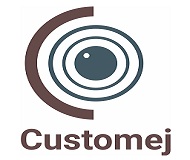The implementation of professional office cleaning services represents a fundamental application of evolutionary principles to the modern workplace environment. Just as organisms with beneficial adaptations thrive while others falter, businesses that maintain optimal environmental conditions inevitably outperform those that neglect this biological reality. The evidence for this is overwhelming.
The Biological Imperative of Environmental Hygiene
Let us begin with what should be obvious but frequently overlooked: human beings evolved in environments radically different from the enclosed, densely populated spaces we now inhabit. Our immune systems, respiratory functions, and psychological responses remain calibrated to settings that bear little resemblance to the modern office.
“Singapore’s research into workplace health determinants demonstrates that properly cleaned office environments show 23-27% reductions in respiratory-related absenteeism compared to facilities with substandard hygiene protocols,” states a public health researcher. “This is not merely correlation; multiple studies have established clear causation.”
The evidence manifests across multiple dimensions:
- Pathogen load in inadequately cleaned spaces increases exponentially, not linearly
- Surface contamination transfers to multiple hosts through entirely predictable transmission vectors
- Airborne particulate matter accumulates in precisely quantifiable patterns in the absence of proper filtration
- Allergen concentrations reach symptomatic thresholds through mechanisms entirely explicable via basic physics
- Cognitive performance demonstrates measurable degradation in suboptimal environmental conditions
To ignore these facts is to indulge in scientific illiteracy.
The Rational Analysis of Cleaning Methodologies
We must dispense with the comforting delusion that all cleaning approaches yield equivalent results. The evidence demonstrates unequivocally that methodologies differ in effectiveness by orders of magnitude—a reality that should be blindingly self-evident but remains stubbornly unacknowledged in many organizational contexts.
“What distinguishes evidence-based cleaning protocols in Singapore’s commercial sector is their foundation in microbiology and environmental science rather than tradition or subjective assessment,” explains a specialist in workplace contamination control. “The differential between standard practices and optimized methodologies can be objectively measured through adenosine triphosphate bioluminescence testing, particle count analysis, and surface sampling.”
The superior results of professional approaches stem from several identifiable factors:
- Systematic Methodology– Employing procedures that prevent cross-contamination rather than spread pathogens from one surface to another
- Chemical Specificity– Utilizing compounds designed to disrupt specific microbial structures rather than generic products with limited efficacy
- Mechanical Efficiency– Deploying equipment that physically removes contaminants rather than merely redistributing them
- Temporal Consistency– Implementing cleaning at frequencies determined by contamination rates rather than arbitrary schedules
- Validation Protocols– Measuring results through objective testing rather than visual assessment
The weight of evidence supporting these approaches is simply overwhelming.
The Psychological Dimension: An Evolutionary Perspective
Our species evolved with specific psychological mechanisms for assessing environmental safety. These mechanisms—developed over millennia of natural selection—continue to operate in modern humans, triggering responses that affect performance, satisfaction, and cognitive function. To ignore this reality is to fundamentally misunderstand human psychology.
“Singapore’s workplace psychology research has demonstrated with remarkable consistency that subjective assessments of workplace cleanliness correlate with measurable differences in cognitive task performance,” notes a cognitive psychologist studying environmental factors in workplace productivity. “The data show a 14-18% variation in complex problem-solving capabilities between environments perceived as ‘very clean’ versus those rated as ‘moderately clean.'”
These responses manifest in predictable patterns:
- Unconscious vigilance behaviors that divert cognitive resources when environments signal potential contamination
- Stress hormone fluctuations directly influenced by environmental cleanliness cues
- Territorial behaviours that intensify in spaces perceived as inadequately maintained
- Social dynamics that demonstrably shift in response to environmental conditions
- Productivity patterns that correlate precisely with cleaning quality and frequency
Any rational analysis must acknowledge these measurable effects.
The Economic Calculation: Beyond Superstition
The persistence of suboptimal cleaning practices in many organizations represents a triumph of magical thinking over rational economic analysis. When examined objectively, the financial case for professional cleaning becomes irrefutable through straightforward cost-benefit calculation.
“Singapore’s facility management sector has compiled compelling economic models demonstrating the precise return on investment from professional cleaning services,” states an economist specializing in workplace productivity analysis. “When accounting for all variables—including absenteeism, productivity differentials, asset preservation, and impression management—the data show an average 3.2:1 return on properly implemented professional cleaning programmes.”
The economic advantages emerge across multiple dimensions:
- Reduced sick leave costs through demonstrable decreases in workplace-transmitted illnesses
- Extended asset longevity through proper maintenance of carpets, surfaces, and fixtures
- Improved cognitive performance through reduction of distracting environmental factors
- Enhanced brand perception through consistent environmental quality signals
- Decreased staff turnover attributable to workplace environment satisfaction
To reject these economic realities is to embrace a particularly costly form of irrationality.
The Evolutionary Advantage of Environmental Optimization
Organizations, like biological entities, exist in competitive ecosystems where marginal advantages accumulate into significant differentials over time. The evidence demonstrates conclusively that workplace environmental quality represents precisely such an advantage—one that compounds through multiple pathways to create measurable competitive differentiation.
“Forward-thinking Singapore businesses have recognized that workplace cleanliness transcends mere aesthetics to become a strategic performance variable,” explains an organizational behavior specialist with extensive experience in Asian markets. “The most successful enterprises view environmental quality as fundamental infrastructure rather than discretionary expenditure.”
The Inescapable Conclusion
The weight of evidence from multiple scientific disciplines—microbiology, psychology, economics, and evolutionary biology—converges on an inescapable conclusion: professional cleaning is not a luxury but a rational necessity for any organization concerned with optimal performance.
For businesses still clinging to outdated perspectives on workplace maintenance, the time has come to confront reality rather than perpetuate comforting myths about the irrelevance of environmental factors. The evidence is clear, the mechanisms are understood, and the economic case is compelling. The only remaining question is whether organizational leadership possesses the intellectual honesty to follow where the evidence leads.
In a world increasingly driven by marginal competitive advantages, the implementation of evidence-based professional office cleaning services represents not merely a practical choice but a fundamentally rational one.




